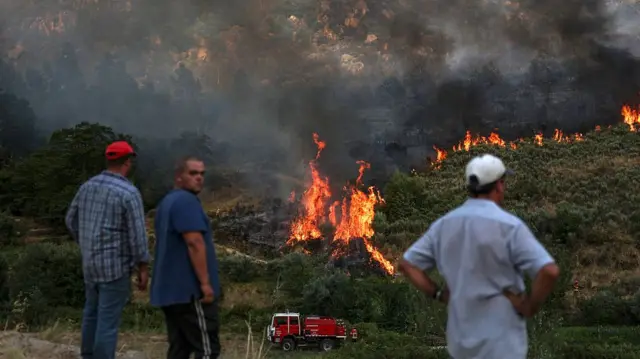Southern Europe in grip of heatwave with wildfires flaring across the continentpublished at 06:48 BST 12 August
 Image source, Getty Images
Image source, Getty ImagesNearly 700 firefighters have been tackling wildfires in Portugal since the weekend
The UK isn't alone in sizzling under a heatwave this week - parts of southern Europe are sweltering too as temperatures pass into the 40Cs.
In Italy, a young boy died of heatstroke on Monday, after being found unconscious in his family's car in Sardinia.
And across the country, 11 cities have been given a "level three" risk warning for today by the Italian health ministry. This means that in major cities like Bologna and Milan, "emergency conditions" are in place and residents are warned to avoid exposure to the sun between 11:00 and 18:00 - the hottest parts of the day.
Meanwhile in northern Spain, firefighters have been grappling with a fire near a Unesco-listed national park, with high temperatures and strong winds forcing hundreds of residents to evacuate.
Over the weekend, Trancoso in Portugal has also seen a huge blaze, with more than 650 firefighters and six aircraft tackling wildfires, according to AFP news agency.

